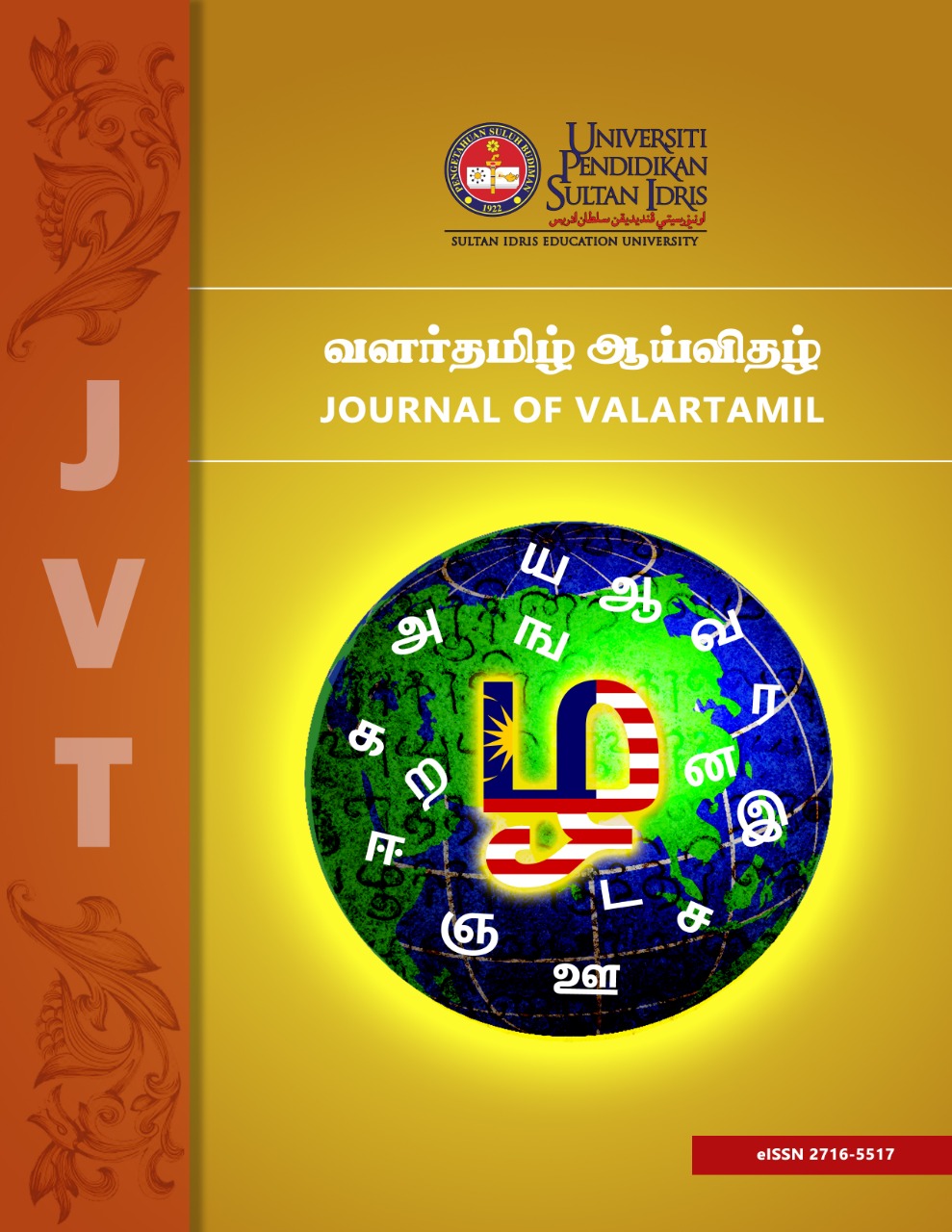Teaching Thirukkural using Memes to Malaysian Tamil Secondary School Students
DOI:
https://doi.org/10.37134/jvt.vol4.2.9.2023Keywords:
memes, storyboards, technology, Thirukkural, learningAbstract
In the contemporary classroom, engaging students often necessitates the adoption of innovative educational technologies that not only pique their curiosity but also seize their attention. Within the Malaysian Tamil secondary school context, this assessment delves into the use of memes and blended learning methodologies to facilitate the comprehension of Thirukkural and Tamil literature. The incorporation of technological tools such as memes and storyboards serve a dual purpose: fostering creative thinking and rendering the learning process more accessible and effective, especially for students well-versed in digital platforms and social networking. This study focuses on the Tamil language curriculum at the secondary school level, encompassing the pivotal language skills of listening, speaking, reading, and writing. Specifically, this study investigates the impact of employing memes as an instructional tool in teaching Thirukkural to Malaysian Tamil secondary school students. This study seeks to evaluate the extent to which this innovative approach enhances student engagement and deepens their comprehension of this classical Tamil text. To conduct this assessment, a quantitative approach was adopted, involving a sample of 10 students from secondary schools in the state of Perak. The findings revealed that during the pretest phase, students demonstrated a reading fluency level of 48.33%, with an average score of 7.25 marks per student. In contrast, the post-test results revealed a substantial improvement, with students achieving a reading fluency level of 82%, averaging 12.30 marks per student. Consequently, this study asserts that the integration of memes and digital tools significantly augments the learning experience of Form Two students in the realm of Tamil literature. The implications of this research extend to educators and students, offering valuable insights into how pedagogical approaches driven by technology can elevate learning outcomes and foster a deeper understanding of the literature. This innovative educational strategy represents a seamless and effective means of engaging and educating students in the digital age.
Downloads
References
Agnes Dian Purnama. (2017). Incorporating Memes and Instagram to Enhance Student’sParticipation: https://www.researchgate.net/publication/314866526_Incorporating_Memes and_Instagram_to_Enhance_Student's_Participation
Blogger. (2021). https://www.blogger.com/
Canva. (2021). https://www.canva.com/
Jamie Spencer. (2021). What Is A Blog? A Guide to Understanding the Concept Of Blogging: https://makeawebsitehub.com/what-is-a-blog/
Limor Shifman. (2013). Memes in a Digital World: Reconciling Conceptual Troublemaker: https://academic.oup.com/jcmc/article/18/3/362/4067545
R. Reddy. (2020). Joy of Learning Through Internet Memes: https://online-journals.org/index.php/i-jep/article/view/15211
Storyboard that. (2021). https://www.storyboardthat.com/
Vyond Team. (2021). What is a storyboard and why do you need one? : https://www.vyond.com/resources/what-is-a-storyboard-and-why-do-you- need-one/
Web. (2021) Benefits of blogs in education: http://desarrolloweb.dlsi.ua.es/blogs/benefits-of-blogs
Ponniah, Kartheges, et al. "The impact of hybrid learning in educating Tamil educator and learner relationship." International Journal of Advanced and Applied Sciences 10 (2023): 102-107.
Ponniah, Kartheges, et al. "Blended learning: A study on Tamil primary schools." International Journal of Advanced and Applied Sciences 9.3 (2022): 172-177.
Thamburaj, Kingston Pal. "E-Teaching in Teacher education—a Conceptual framework of Sultan Idris education university." Sino-US English Teaching 18.5 (2021): 107-111.
Thamburaj, Kingston Pal, and Shariga Sivanathan. "Marapu vaḻi eḻututal tiṟaṉum taṟkāla eḻututal tiṟaṉum oru pārvai [A study on modern and traditional writing skill]." Muallim Journal of Social Sciences and Humanities (2020): 141-146.
Thamburaj, Kingston Pal, and Vimona Rengganathan. "A critical study of spm Tamil literature exam paper." Asian Journal of Assessment in Teaching and Learning 5 (2015): 13-24.
Downloads
Published
Issue
Section
License
Copyright (c) 2023 Logeswary Arumugum, Kingston Pal Thamburaj, Selvaraj Ramasamy

This work is licensed under a Creative Commons Attribution-NonCommercial-ShareAlike 4.0 International License.





